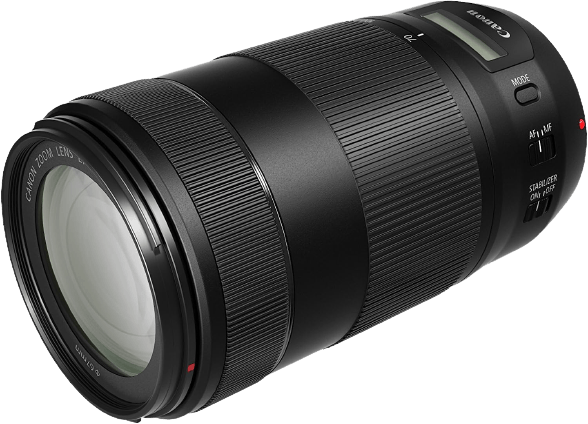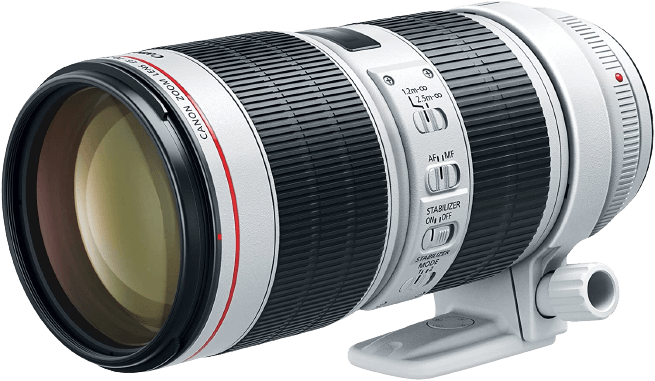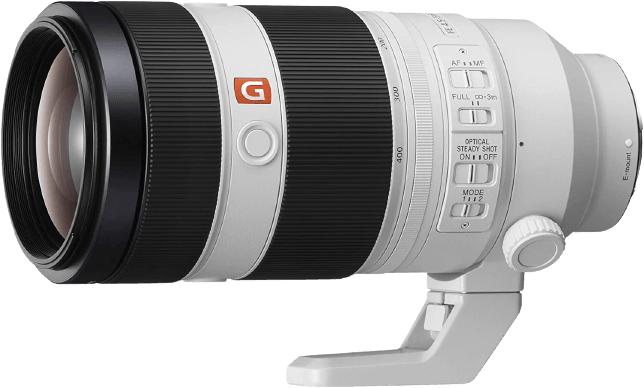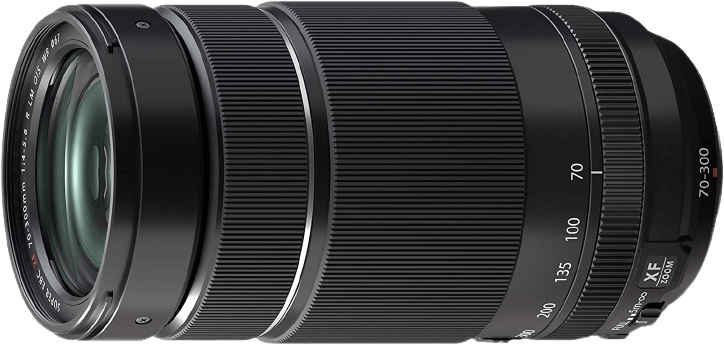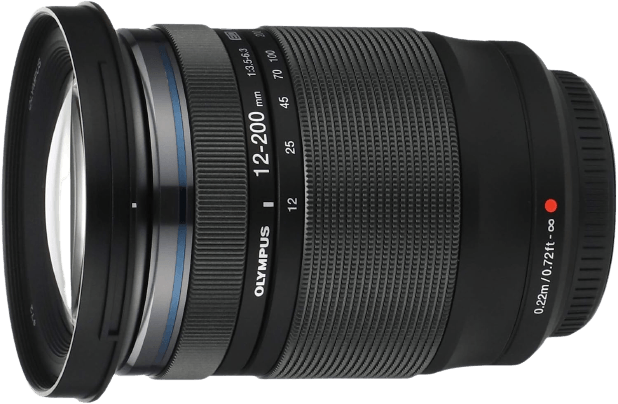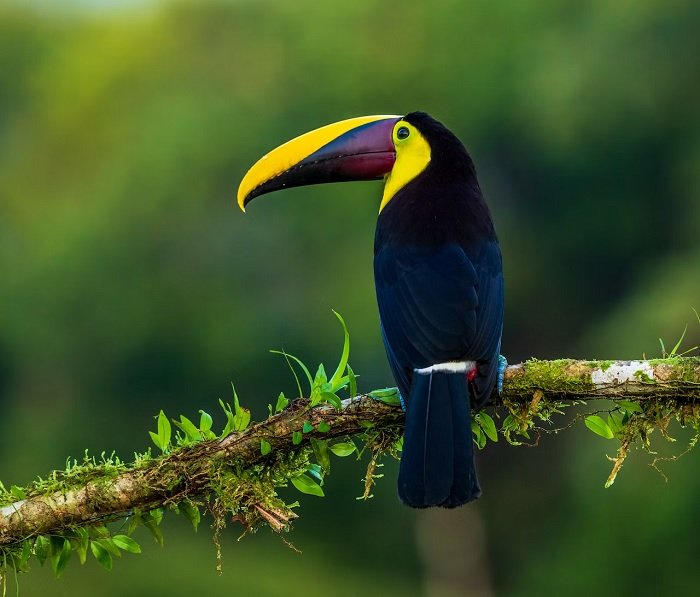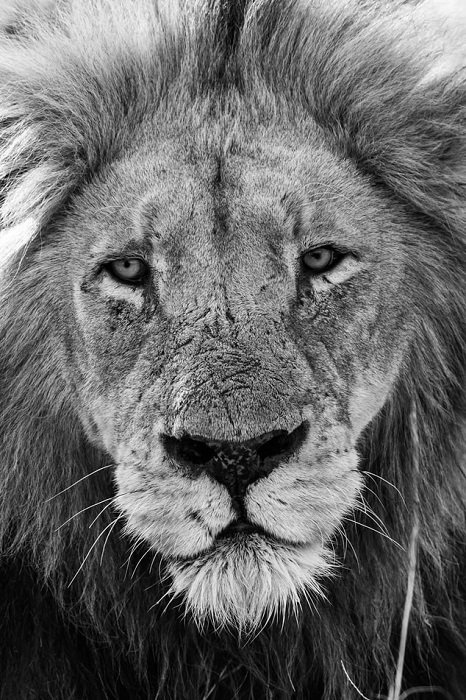The Nikon AF-P DX 70-300mm f/4.5-6.3 is our choice as the best telephoto lens. The 70-300mm zoom range makes it a versatile option. It has the quality for portrait and product photography. And it has the magnification for sports and wildlife photographers. Our list includes telephoto lenses for Nikon, Canon, and Sony cameras. And there’s a section for other camera brands too. Every photographer can find the telephoto lens they need. [Note: ExpertPhotography is supported by readers. Product links on ExpertPhotography are referral links. If you use one of these and buy something, we make a little bit of money. Need more info? See how it all works here.]
Finding the Right Telephoto Lens For You
Before you buy any lens, you need to know it’s compatible with your camera. We’ve separated our list into sections that include lenses of a certain camera brand. If you’re a Nikon user, skip to the Nikon lens section. If you have a Sony camera, skip to the Sony section.
Best Telephoto Lenses for Nikon Cameras
Theses are the best telephoto lenses for Nikon cameras. The roundup table gives you a quick look at our Nikon lens choices. Then we’ll go into detail on each one below. You’ll have all the info you need to make an educated decision. The Nikon Nikkor AF-P is the best telephoto lens for Nikon users. This zoom lens is lightweight, affordable, and has excellent build quality. It’s the perfect partner for a Nikon APS-C DSLR camera. It has a focal length range from 70 to 300mm. The range will get you into the heart of the action without having to risk life and limb. The 70mm end is lovely for tightly framed portraits. And the 300mm focal length gives you excellent magnification for sports or wildlife photography. As a Nikon AF-P lens, the AF system won’t work with some older Nikon models. But that won’t be a problem if you’ve bought your Nikon in the last few years. The AF motor is fast and reliable. And it’s very quiet when focusing. The lens doesn’t have the fastest max aperture, with only f/6.3 at full reach. Thankfully, Nikon’s vibration reduction system gives you more options with your exposure settings. It gives you 4.5 stops of shake reduction. That means you can shoot with slower shutter speeds without blur. The Nikon AF-S FX 200-500mm f/5.6 is the best telephoto for Nikon full frame cameras. You can use it with their ASP-C DSLRs. But you’ll experience some cropping. The optical quality is fantastic. And you get incredible magnification. With a 500mm maximum focal length, the lens gives you excellent reach. It’s perfect for sports photography, getting you to the heart of the action from the stands. And you can capture stunning wildlife photos without having to leave your hide. The f/5.6 max aperture isn’t terribly fast. But it is constant throughout the zoom range. And it still gives you a lovely shallow depth of field. It’s easy to achieve a soft bokeh effect in your background. The vibration reduction system gives you more exposure control. It allows you to shoot with a slower shutter speed. And you get sharper images even in low-light conditions. That’s ideal for dawn and dusk nature shoots. And it’ll improve your results at the next nighttime sporting event. The Sigma 70-200mm f/2.8 doesn’t have the magnification of the Nikon lenses. But this lens has other things going for it. The optical quality is superb with very little chromatic aberration throughout its range. And it has features many photographers will appreciate. The fast f/2.8 max aperture is one of the main attractions fof this Sigma lens. It’s constant throughout the zoom range. It gives you fabulous shallow depth of field options. And it performs well in low-light situations. The built-in optical stabilizer also aids sharpness and exposure. It reduces the effect of camera shake, giving you sharper images. And it allows you to shoot at slower shutter speeds. The autofocus system is fast and accurate. And the focus limiter helps you focus even quicker. That can be a lifesaver if you’re shooting fast animals or rapid sporting action. The Sigma 70-200mm f/2.8 is also available for Canon cameras.
Best Telephoto Lenses for Canon Cameras
Now we’ll look at the best telephoto lenses for Canon cameras. Check out the quick preview then dive into the detailed reviews below. The Canon EF 70-300mm f/4.5-5.6 is a versatile telephoto for any Canon user. The focal length range gives you fantastic shot options. You can shoot everything from portraits to motorsports. It’s compatible with Canon’s full frame DSLR cameras. But you can use it with their APS-C cameras too. The autofocus is powered by Canon’s Ultrasonic Motor (USM). That’s Canon’s more advanced AF system. It’s fast and reliable, which is excellent for working with moving subjects. And it’s whisper-quiet. It won’t spook the animals or startle the players. The lens has image stabilization built-in. It gives you more exposure control and keeps your images crisp and clear. You don’t need to worry about camera shake or motion blur. The Canon EF 70-300mm f/4.5-5.6 combines performance and value. The results are impressive. And it’s excellent value for money. The Canon RF 100-400mm f/5.6-8 is one of the best telephoto lenses for Canon’s mirrorless camera range. The wide focal length range gives you excellent shot options. It’s ideal for sports, wildlife, and bird photography. It’s lightweight and affordable for a telephoto lens, making it perfect for any camera bag. This lens doesn’t have the fastest max aperture, especially at the larger focal length. The built-in image stabilization system helps compensate for this. By reducing the effect of camera shake, you can use slower shutter speeds without the risk of image blur. Canon’s USM autofocus motor is ideal for sports and wildlife. It’s quiet in operation. And it’s fast and accurate too. You’ll get the shot you need no matter how fast the action is. The Canon EF 70-200mm f/2.8L doesn’t have the reach of other telephoto lenses. The 200mm focal length might be too short for some photographers. But it’s unrivaled in image quality. And features give it a broad appeal with professional photographers. The fast f/2.8 aperture is a major selling point. You don’t often see telephoto lenses with an f/2.8 aperture. It gives you incredible low-light performance. You get fantastic exposure control. And it gives you wonderful bokeh for portrait, product, and food photography. The image stabilization gives you 3.5 stops of shake reduction. You’ll have crisp images with pinpoint sharpness. And the USM autofocus system can handle even the fastest sporting action. It’s a durable telephoto lens. It’s dust-resistant and weather sealed, protected for photography in all conditions. It’s ideal for wildlife expeditions and outdoor sporting events.
Best Telephoto Lenses for Sony Cameras
Here’s the section of our list for Sony camera users. The 70-350mm is the best telephoto lens if you have a Sony APS-C mirrorless camera. The wide zoom range gives you plenty of shot options. And the 350mm max focal length gives you enough magnification for sports and wildlife photography. This lens gives you excellent image quality with minimal ghosting and flare. The three extra-low dispersion glass elements suppress aberration. And you can achieve a lovely bokeh effect with a shallow depth of field. The autofocus stepping motor is fast and efficient. Tracking moving subjects is no issue. And the 3-stop optical image stabilization gives you sharper images. It also improves performance in low-light situations. It’s weather sealed and robust—excellent for outdoor shooting. You won’t find a better telephoto lens for your Sony APS-C mirrorless camera. The Sony FE 70-200mm is the best telephoto lens for anyone with a Sony full frame camera. It’s rugged and versatile. And it’s a popular choice with many Sony photographers. An f/4 maximum aperture isn’t the fastest. But it still gives you plenty of natural light for exposure control. And it’s constant throughout the zoom range. This Sony FE has a dual-mode image stabilization system. It gives you switchable static and panning modes. That gives you more creative options. And the stepping motor for the autofocus is excellent for fast action and moving subjects. The three double-sided glass elements reduce aberration and ghosting. This wide-angle telephoto lens maintains stunning resolution right to the edges. Sony users won’t be disappointed. This is the best super-telephoto lens for Sony users. It delivers professional quality in every aspect. It has top-class glass engineering. There’s minimal distortion of any kind. It has powerful magnification for sports, wildlife, and bird photography. And it has fantastic image stabilization and AF. The lens uses Sony’s Optical SteadyShot (OSS) stabilization system. It gives you more exposure options by reducing camera shake. And it improves low-light photography. The double linear motor DDSSM AF gives you super-quick autofocus. It’s responsive and reliable, giving you sharp images even with fast-moving subjects. The 9-blade aperture diaphragm gives you lovely bokeh. And it’s dust and moisture-resistant. It’s up to the challenge of the most testing sport and wildlife photoshoots.
Best Telephoto Lenses for Other Brands
This section looks at telephotos lenses for other camera brands. We have the best telephoto lens for Fujifilm, Olympus, and Pentax cameras. This is a must-have telephoto lens if you’re a Fujifilm user. The wide zoom range gives you excellent versatility. And the image quality is fantastic throughout the focal length range. Many photographers will appreciate the optical image stabilization system. It gives you five stops of shake reduction. That keeps your images crisp and clear. And it gives you more options in low-light situations. It has a close focusing distance of 32.7 inches (83 cm) throughout the zoom range. This allows you to create tele-macro images. It’s another way to get creative with this telephoto lens. This lens loves a challenge. It’s dust and moisture-resistant for outdoor photography. And it can operate in temperatures down to 14 °F (-10 °C). It’s ready for any photography expedition. The Olympus ED 12-200mm f/3.5-6.3 is the best telephoto lens if you have an Olympus Micro Four Thirds (MFT) camera. A 200mm max focal length might not sound like much. But due to the smaller sensor of an MFT camera, it’s actually equivalent to 400mm on a full frame camera. That’s incredible magnification. There’s no built-in stabilization. But thankfully, most Olympus MFT cameras have an image stabilization system. The lens does have a reliable AF motor. And it’s weather sealed for outdoor photography. The Pentax D FA 70-200mm f/2.8 is the best telephoto lens for Pentax photographers. The build quality is second to none. The image results will knock your socks off. And it has all the features pro photographers need to succeed. A max f/2.8 aperture is excellent for a telephoto. It gives you fantastic low-light performance with more exposure control. And with the 9-blade aperture, you get a lovely bokeh effect. The lens is equipped with Pentax’s shake-reduction system. It allows you to shoot at slower shutter speeds without the risk of blur. That gives you even better results in low light. The AF motor is fast and accurate. And there’s a quick shift focus system that allows you to switch effortlessly between auto and manual focus. It’s also dustproof and weather sealed for photography in all conditions.
What is a Telephoto Lens?
A common misunderstanding is that a telephoto lens is just another name for a zoom lens. But this is not the case. A telephoto lens can have zoom capabilities, but not always. Telephoto lenses come in zoom and prime lens form. It allows you to be more selective when deciding which lens to choose. You can consider your needs as a photographer, as well as size and cost. A telephoto lens has a long reach. For a lens to be considered telephoto, it needs a focal length of at least 60mm. You will also find medium and super-telephoto, which will have a focal length of over 300mm. The extended focal length brings you closer to your subject when you’re far away. This allows you to capture anything small or far away in superb detail. The telephoto lens allows you to get the composition you’re after, no matter what the distance. A good telephoto lens will also help control your depth of field. You can increase the blurriness of your background, emphasizing your subject. It’s perfect for photographing animals in the wild or for adding power to your portraits.
Things to Look For in a Telephoto Lens
Good telephoto lenses can be expensive. That’s why you need to think about what you need before you buy one. You don’t want to waste your money on a lens that’s ineffective in your field of photography.
Is Your Camera Compatible With the Telephoto Lens?
The first thing to consider is the camera you have. You will need a lens that is compatible with the brand and camera model. Do you have a camera with an APS-C or full frame sensor? There are lenses designed specifically for full frame cameras. But generally, you can also use full frame lenses with crop sensor cameras. This can boost the effective focal length of the lens, increasing zoom capabilities. Using a full frame lens with an APS-C camera will crop your final images. But the image quality is at its best in the center of the frame, so the tighter composition can be beneficial. You won’t experience any vignetting towards the edges. There are also lenses for APS-C cameras. They tend to be smaller and lighter than the full frame options. But you can’t use an APS-C lens with a full frame camera.
Check if Your Camera has Image Stabilization
Lenses can be heavy and hard to handle. If you’re not using a tripod, keeping everything steady can be difficult. At that magnitude, the slightest movement can affect the final image. That’s why built-in image stabilization systems can be so important. They will counteract any vibration or shake, solving the problem “in-camera.” This can save you a lot of work in post-processing. Some full frame cameras have stabilization systems. If so, having one in the lens is less important. But if you do have both, you can be assured of a sharp and precise final image.
Look for a Telephoto Lens With Autofocus
All modern digital cameras have top-quality autofocus systems. But focusing is more complicated when a telephoto lens is involved. That’s why it’s good to look for a lens with a built-in autofocus feature. In-lens autofocus features run on either a supersonic or ultrasonic motor. They will assist you in getting a fast and sharp focus on your subject. And most modern systems are entirely silent. This is a benefit if shooting sport or wildlife photography. Some include a focus limiter. This feature allows you to tell the camera to only focus within a certain range of distance. The lens won’t have to search the entire frame for the subject, which saves time.
Conclusion
A telephoto lens changes the possibilities of your photography. It redefines the limitations. You can capture sporting action on the pitch from the sidelines. And you can capture incredible wildlife photography without leaving your hide. The Nikon AF-P DX 70-300mm f/4.5-6.3 is our top telephoto lens. It’s the perfect combo of quality and value. The Canon EF 70-300mm f/4-5.6 is our favorite Canon choice. And Sony users need the E 70-350mm f/4G. We’ve also included options for Fujifilm, Olympus, and Pentax. There’s a telephoto lens for every photographer.

















